Anahuac-N.W.R.-GrantSlater_Flickr
Do you have any thoughts on this post?
One of the largest public land rallies in recent memory brought together the many diverse groups that value access to the outdoors—and are prepared to fight for it
Nearly 3,000 people rallied in support of public lands on the steps of the Capitol in Boise, Idaho, on Saturday, and their diversity was a powerful statement about the importance of the outdoors. It was a mosaic of individual interests as unique as Idaho itself.
There was an angler in full regalia talking to the rafter who had a polite sign affixed to his paddle that he constantly waved over his head. It said, “Please leave my lands alone.” There were three elk hunting buddies who couldn’t not believe the size of the crowd. There were the grey beards of Idaho’s small-but-potent environmental community, those people who knew Frank Church personally and have spent decades advocating for the outdoors. The endurance running community was there—the wiry kin who can run Idaho’s tallest peaks by lunch and then dance all night.
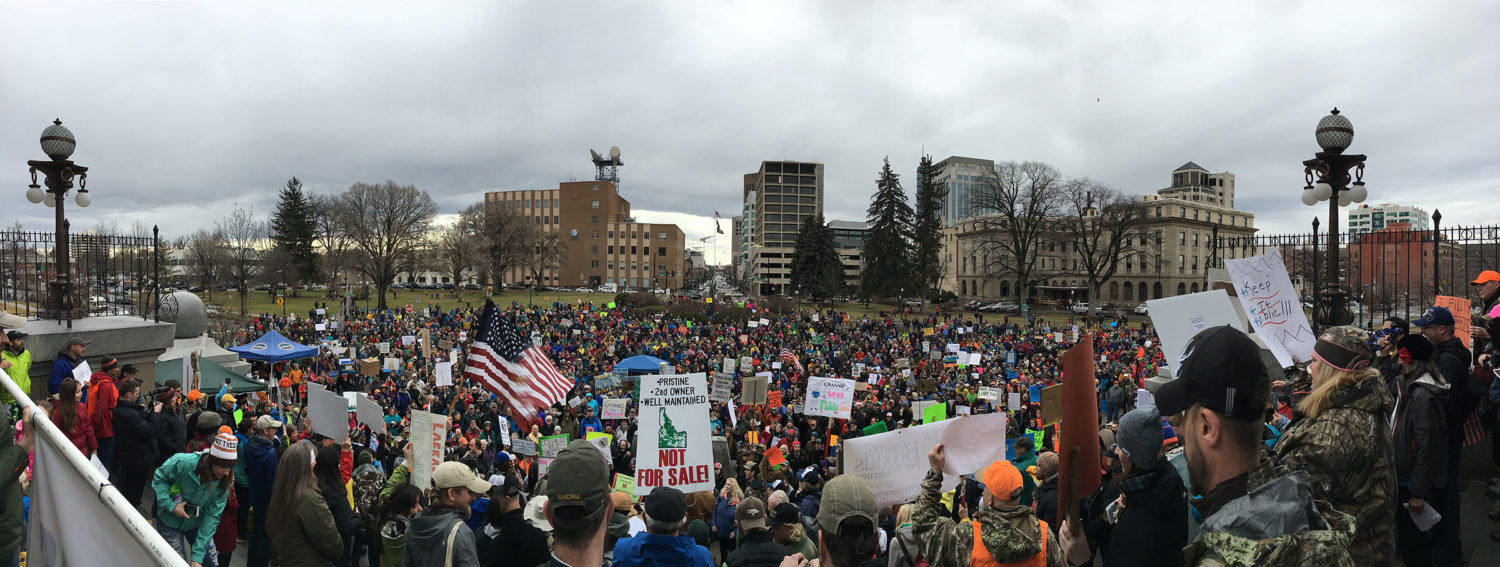
Four newspapers, three television stations, and two radio stations joined bloggers and volunteers watching the vast crowd spill into Jefferson Street. The rally was an effort that the TRCP was proud to help coordinate. It was a non-denominational celebration of the happiness that we all attain pursuing our own diverse adventures in the outdoors.
But the day’s diversity was only half the day’s story. In the rain on Idaho Day, those diverse groups gave voice to one cause: keeping public lands in public hands.
Speaker after speaker recalled their favorite public lands experiences and the need to fight interests that would give our heritage away. Ryan Callaghan, director of conservation for First Lite, a hunting gear manufacturer based in Ketchum, talked about public lands being the backbone of a self-sustaining industry. “I came to Idaho for a job. I stayed in Idaho because of public lands,” he said to the flag-waving crowd. “And First Lite wouldn’t be here without public lands.”
Merin Tigert, a fifth-generation Idahoan and lifelong hunter, spoke of her fears about a future where elected officials would fall for “the folly of short-term fiscal gains over long-term intrinsic values.” Her message was echoed by Martin Hackworth, executive director of the Blue Ribbon Coalition, a nationwide partnership of off-highway vehicle enthusiasts. Public lands taught him lessons that, he argued, his children deserved to learn.
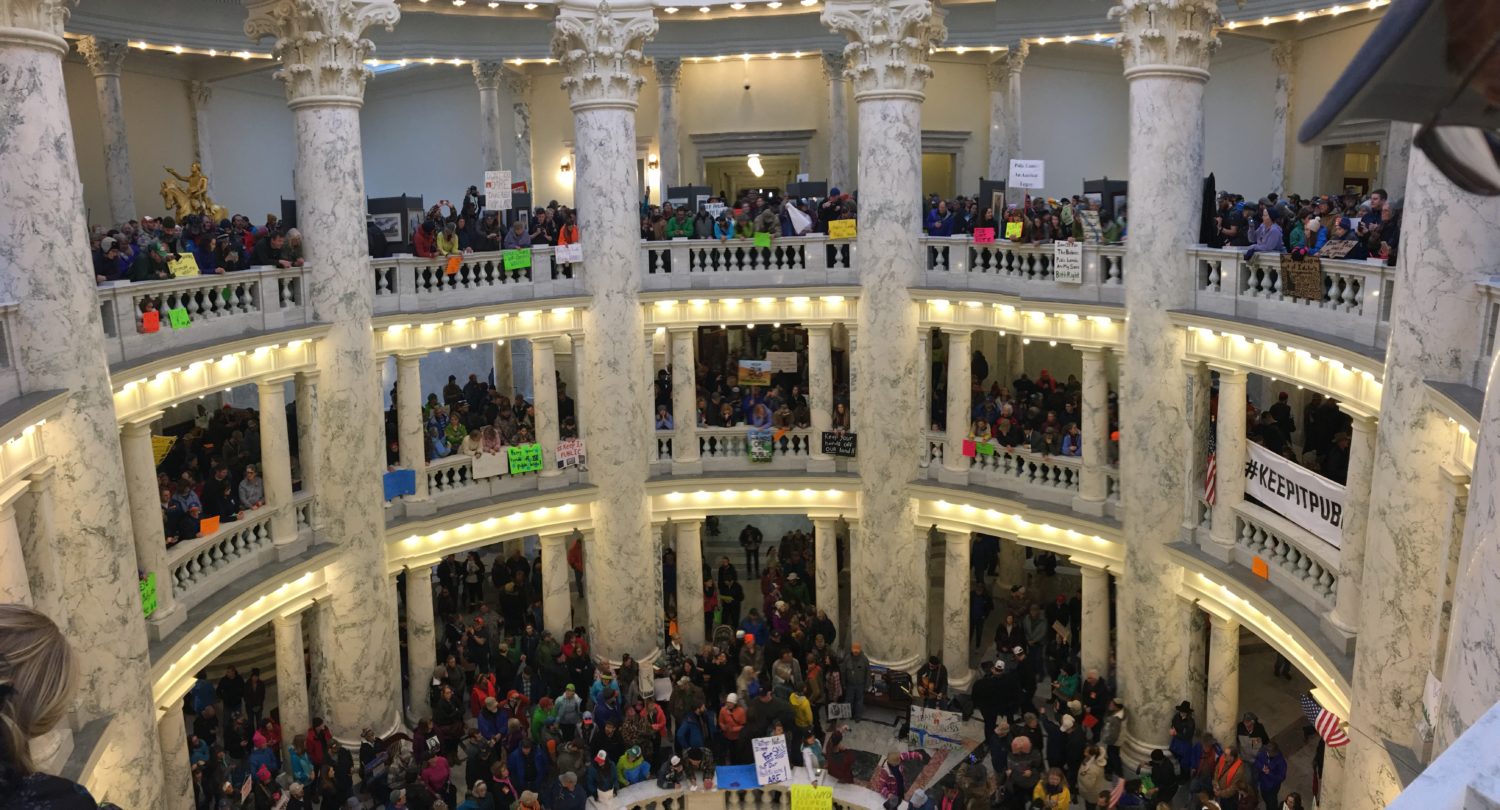
The thread in all their impassioned pleas was undeniable. The outdoors called to each of them differently, but everyone in the crowd felt the call to speak up for why they treasured public lands. “As citizens of the United States, public land is our birthright,” said Hackworth. “As far as I’m concerned, that’s a source of national pride and something I’m not eager to surrender.”
Rialin Flores, Legislative Associate of Conservation Voters for Idaho, agreed and called for the diverse group of interests to stick together. “What these public lands mean to each of us is personal,” Flores said as she invited the rally to flood the Capitol’s rotunda. “What they mean to all of us is powerful.”
On a rainy Saturday in Boise, diversity showed unity. We should celebrate that as we work to keep public lands public.
A Montana elk tag might stretch the budget for a young out-of-state hunter, but it made this private-land hunt possible in more ways than one
Thirty minutes into glassing, I put down my binoculars and continued to scan the private ranch below me with my naked eye. Suddenly, I saw the tan hide of an elk—solo, like me, and nearly a mile away, I guessed—surrounded by nothing but sagebrush. How had I missed that before? Even with my binos, I couldn’t quite make out the headgear. An elk all by itself? It’s got to be a bull, I thought.
With only a cow tag on me, I kept glassing, and eventually I spotted five antlerless elk at the edge of the timber, a few hundred yards south of the loner bull. Game on. I shed my winter jacket and started running to close the gap and set up for a shot.
That tag, which cost me no small chunk of change, was suddenly burning a hole in my pocket.
An Out-of-State Hunter on a Budget
Having just moved to Montana last fall, I hadn’t yet met the requirement of six months’ residency to purchase in-state tags. Out-of-state licenses run $858 for a bull elk tag, something that I simply couldn’t afford. Instead, friends suggested that I look into an extended shoulder season hunt for cow elk only. These elk B licenses are a bit more reasonable, but still cost about $300. As I was shopping around, I found myself wondering where all of this money goes.
The expense of some tags may make you think the system is designed to keep all but elite hunters out, but I quickly learned that these dollars actually help expand our access.
For starters, every license fee helps to pay state fish and game managers doing the work of conserving habitat and maintaining our access to hunting and fishing. Fees also help fund the research that allows sound conservation practices to ensure hunting and fishing opportunities for future generations. And, in some cases, license fees also pay for access to private land.
The ranch I was hunting was open to me thanks to Montana’s Block Management Area (BMA) program, which is primarily funded by license fees. The revenue generated from out-of-staters, specifically—and technically I still had to count myself among this group—helps carry the program. “Twenty-five percent of BMA funding comes from non-resident combo license fees, with more coming from out-of-state upland bird licenses and everyone else’s hunting access enhancement fees,” says Allen Charles, who served as the coordinator for landowner programs benefitting sportsmen at Montana Fish, Wildlife and Parks before retirement.
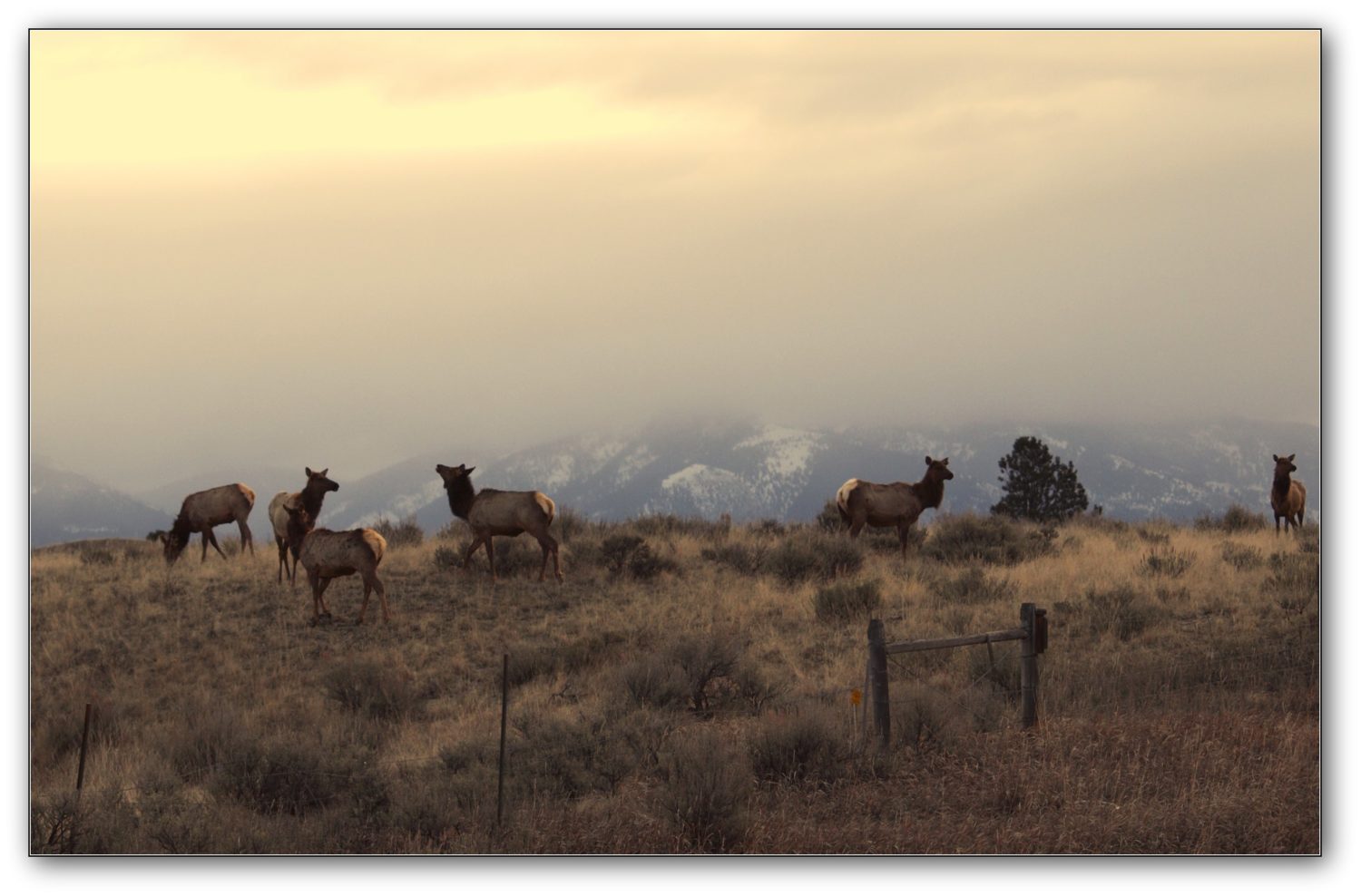
Block Management Basics
Montana’s BMA program has been around since the 80s, but 1995 is when it started to resemble what it is today. Charles told me that, at that time, 450 private landowners opened public hunting access to 2.5 million acres. Today, more than 1,250 landowners voluntarily participate in the program, opening their gates to more than seven million private acres—and that’s not counting the public lands adjacent to these properties, which would otherwise be difficult, if not impossible, to access.
Participation in the program is voluntary, but landowners receive compensation for opening access. This is where our tag fees come in. “Montana’s budget for the BMA program is around $6.5 million a year,” explains Charles. “Only 10 to 20 percent of that is funded through the federal Pittman-Robertson Act, with the rest coming directly from Montana license fees.”
The cool thing about the tag I scored, besides coming in at a more manageable price, is that it is paired with the possibility of gaining BMA access to hunt just the type of land where elk spend their time in the late fall—the low-country wintering grounds that happen to be primarily private lands. I was signing on to provide a benefit, too, by (hopefully) helping to manage an elk herd that was still overpopulated at the end of the regular hunting season.
Charles says it’s a good alternative for blue-collar hunters, or anyone who can’t afford a private land lease or guided hunt, to access private land.
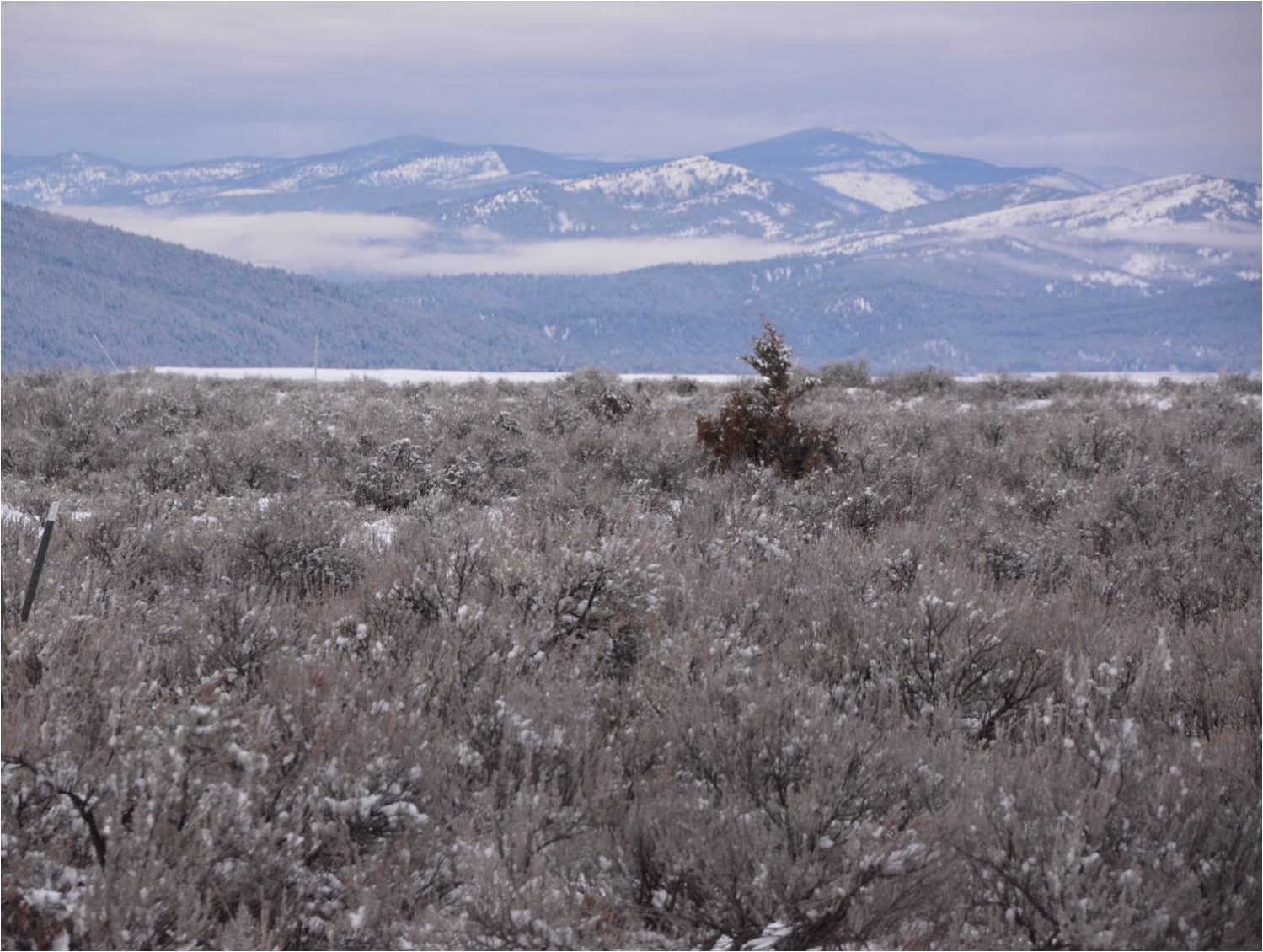
Backstrap Dividends
My investment in an out-of-state license paid off, and I felt as if I’d marked a Montana rite of passage when I finally harvested one of the cows I’d spotted from the hillside. I closed in on the small herd, walking very slowly, eyes wide, looking for any movement through the timber. I crept closer for what felt like an eternity, but was probably just minutes, before the lead cow stepped out in front of me, broadside. I ranged her at 95 yards, steadied, and pulled the trigger.
The investment I made in my late-season tag was a careful one, but now I know the true value of what I was buying. It wasn’t just a chance for me to be out there. (And I wouldn’t have been if not for the license-buying hunters who came before me.) Considering the resulting boost to access and habitat—not to mention the 125 pounds of meat in my freezer or a little help for a landowner who I can now count as my neighbor—that $300 was money well-spent.
Montana’s mid-March application deadline for deer and elk tags is quickly approaching. If you’re trying to decide whether or not to buy an expensive hunting license, just remember that these costs are a down-payment on many benefits for wildlife, access, and the future of our sporting traditions. When you look at it that way, it may seem like a small price to pay.
Sportsmen now look to Secretary Zinke to restore the public’s voice in the BLM land-use planning process that affects habitat, access, and rural economies
Today, U.S. Senators voted to nullify the Bureau of Land Management’s revised land-use planning rule, commonly known as Planning 2.0, which gives the public more chances to weigh in on land management decisions for 245 million acres of BLM public lands. The House passed a similar resolution of disapproval using the Congressional Review Act on February 7.
President Trump’s signature on this action will revert BLM planning to a decades-old process and may prevent the agency from creating a new rule that has the same benefits for habitat and public involvement. Planning 2.0 was the product of more than two years of collaboration between the agency, state and local governments, and the public.
“Hunters and anglers are puzzled by the fact that Congress would choose to destroy a refined and more inclusive public lands management process,” says Joel Webster, director of Western lands with the Theodore Roosevelt Conservation Partnership. “Perhaps some additional fine-tuning could have further improved BLM planning, but this CRA action is the equivalent of burning down the house simply because some window trim needed replacing. It’s an overreaction with real-world consequences for fish, wildlife, and the American people.”
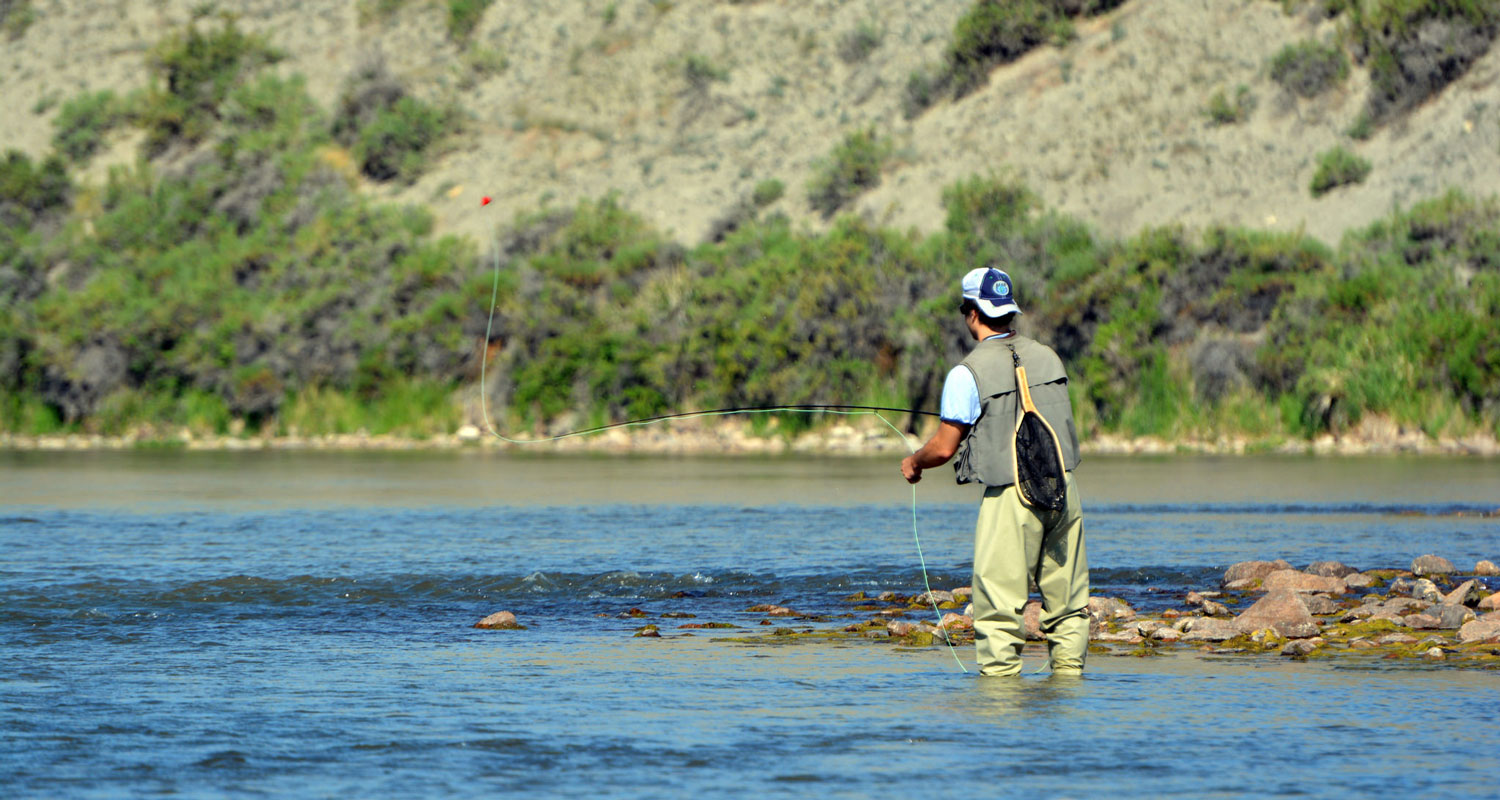
Nineteen sportsmen’s groups wrote Congress in support of Planning 2.0 revisions that created three additional opportunities for the public and key collaborators—like state and local governments—to be involved at the front-end of the land-use planning process. These additional steps were designed to increase agency transparency and public involvement, and these benefits are still sorely needed to boost overall satisfaction with the management of BLM public lands across the country.
“It is tragic to see so much hard work and public input go to waste, only to be replaced with uncertainty,” says Steven Williams, president of the Wildlife Management Institute. “Meanwhile, the agency will continue to struggle in using an outdated, ineffective planning process to deal with modern-day challenges on public lands.”
Consideration for big game migration corridors and other planning tools that account for the most recent scientific data are not written into the previous land-use planning rule, established in 1983. Hunters and anglers are looking to the newly confirmed Secretary of the Interior to find other ways of securing these benefits.
“Sportsmen and women are incredibly savvy about public lands management and how planning efforts affect the places we hunt and fish—these are our lands and we deserve a fair shake,” says Corey Fisher, senior policy director for Trout Unlimited’s Sportsmen Conservation Project. “We stand ready and willing to work with Secretary Zinke to restore the public’s voice in BLM public land management and see to it that important fish and wildlife habitat isn’t overlooked.”
News for Immediate Release
Mar. 7, 2017
Contact: Kristyn Brady, 617-501-6352, kbrady@trcp.org
Sportsmen now look to Secretary Zinke to restore the public’s voice in the BLM land-use planning process that affects habitat, access, and rural economies
WASHINGTON, D.C. – Today, U.S. Senators voted to nullify the Bureau of Land Management’s revised land-use planning rule, commonly known as Planning 2.0, which gives the public more chances to weigh in on land management decisions for 245 million acres of BLM public lands. The House passed a similar resolution of disapproval using the Congressional Review Act on February 7.
President Trump’s signature on this action will revert BLM planning to a decades-old process and may prevent the agency from creating a new rule that has the same benefits for habitat and public involvement. Planning 2.0 was the product of more than two years of collaboration between the agency, state and local governments, and the public.
“Hunters and anglers are puzzled by the fact that Congress would choose to destroy a refined and more inclusive public lands management process,” says Joel Webster, director of Western lands with the Theodore Roosevelt Conservation Partnership. “Perhaps some additional fine-tuning could have further improved BLM planning, but this CRA action is the equivalent of burning down the house simply because some window trim needed replacing. It’s an overreaction with real-world consequences for fish, wildlife, and the American people.”
Nineteen sportsmen’s groups wrote Congress in support of Planning 2.0 revisions that created three additional opportunities for the public and key collaborators—like state and local governments—to be involved at the front-end of the land-use planning process. These additional steps were designed to increase agency transparency and public involvement, and these benefits are still sorely needed to boost overall satisfaction with the management of BLM public lands across the country.
“It is tragic to see so much hard work and public input go to waste, only to be replaced with uncertainty,” says Steven Williams, president of the Wildlife Management Institute. “Meanwhile, the agency will continue to struggle in using an outdated, ineffective planning process to deal with modern-day challenges on public lands.”
Consideration for big game migration corridors and other planning tools that account for the most recent scientific data are not written into the previous land-use planning rule, established in 1983. Hunters and anglers are looking to the newly confirmed Secretary of the Interior to find other ways of securing these benefits.
“Sportsmen and women are incredibly savvy about public lands management and how planning efforts affect the places we hunt and fish—these are our lands and we deserve a fair shake,” says Corey Fisher, senior policy director for Trout Unlimited’s Sportsmen Conservation Project. “We stand ready and willing to work with Secretary Zinke to restore the public’s voice in BLM public land management and see to it that important fish and wildlife habitat isn’t overlooked.”
Theodore Roosevelt’s experiences hunting and fishing certainly fueled his passion for conservation, but it seems that a passion for coffee may have powered his mornings. In fact, Roosevelt’s son once said that his father’s coffee cup was “more in the nature of a bathtub.” TRCP has partnered with Afuera Coffee Co. to bring together his two loves: a strong morning brew and a dedication to conservation. With your purchase, you’ll not only enjoy waking up to the rich aroma of this bolder roast—you’ll be supporting the important work of preserving hunting and fishing opportunities for all.
$4 from each bag is donated to the TRCP, to help continue their efforts of safeguarding critical habitats, productive hunting grounds, and favorite fishing holes for future generations.
Learn More
